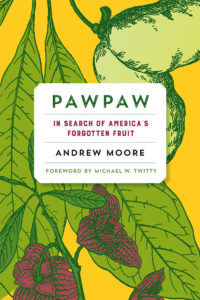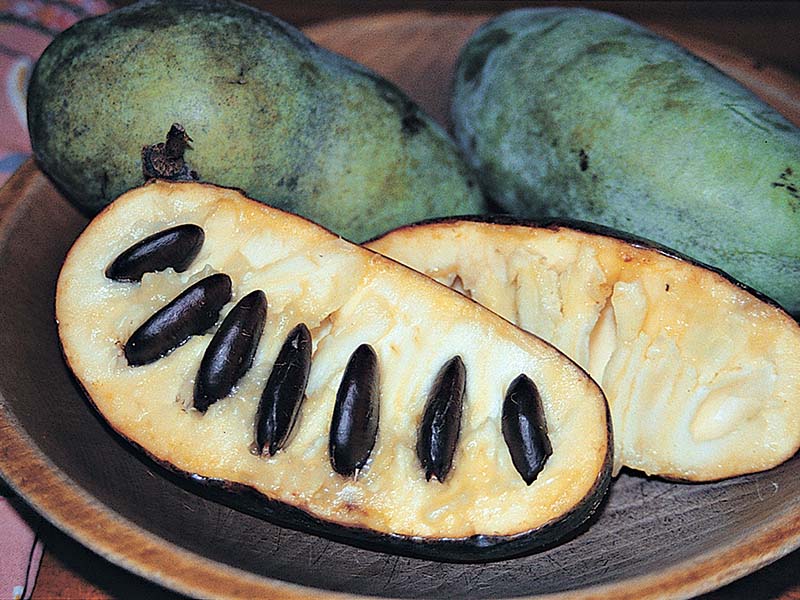Andrew Moore, the author of Pawpaw: In Search Of America’s Forgotten Fruit, talks to us about pawpaw and the culture that surrounds it.
When I received an invitation to learn about pawpaws I was extremely curious about this fruit that I’d never heard of before. Give it to Andrew Moore, a Pittsburgh writer and gardener, to write an entire book on the subject and then be nominated for the 2016 James Beard Award for Literature. When Moore learned about my connection to Virginia, he told me that the Colonial Parkway is actually lined with pawpaw trees! Moore was kind enough to take a selfie with me and answer a few questions.
When someone asks you what a pawpaw is and what it tastes like, what’s your signature response?
A pawpaw is the largest edible fruit native to the United States, and tastes like a banana-mango custard. It belongs to a tropical family of plants—the Annonacea, or Custard Apple family—which makes it all the more unique and interesting. It’s delicious and unusual, and those merits alone make it hard to understand why this native fruit is not
better known.
When did you first learn about pawpaws?
I first learned about pawpaws at the Ohio Pawpaw Festival in Albany, Ohio. I went in blind and came back with a mission. I wanted to know everything I could about this plant, and the book was a natural progression of recording and sharing that information.

Pawpaw: In Search Of America’s Forgotten Fruit
What was the most surprising thing you learned about pawpaws while writing your book?
I was delighted to meet people, and families, and even communities, that had maintained a vibrant pawpaw culture through picking, eating, growing, and celebrating pawpaws. And it proved to me once again that there’s still so much to celebrate in our natural and cultural heritage, and that sometimes those things are hiding in plain sight.
Why do you think people know so little about pawpaws?
Americans of all stripes once knew the pawpaw very well, but over the past century we’ve experienced a radical shift in the foods we eat, and our diets have become much more industrial and homogeneous. Wild foods like the pawpaw were increasingly neglected, and as we’ve stopped looking to the woods for food, we’ve stopped knowing the pawpaw. However, I am encouraged to see us trending back to our heritage and heirloom foods, a culinary revival that is also bringing renewed attention to the pawpaw.
You traveled all around the country for your book; where is the most memorable place you stopped?
I don’t think I could pick just one most memorable place, but I will say that I had some fun times hunting pawpaws along the wild and urban rivers of the eastern US. I am especially grateful to the Quapaw Canoe Company for leading me on a canoe trip down the lower Mississippi River. It took us two days but when we found a patch of wild, riverside pawpaws, it was cause for celebration.
What is your favorite way to eat pawpaws?
To cut it in half and then eat it with a spoon. A close second is definitely ice cream. I have seen the future of ice cream and it is pawpaw ice cream.
What purpose do you hope your book serves to others?
First of all, I hope people enjoy the story. Beyond that, if they’re inclined to seek out pawpaws after reading it, I hope they enjoy hunting them in the woods, or caring for trees in their own yards, or encouraging local farmers to plant a few as well. I can’t be certain about the pawpaw’s future, or to what extent Americans will want it, but I hope the book can be of some use as we reacquaint ourselves with this fruit.

